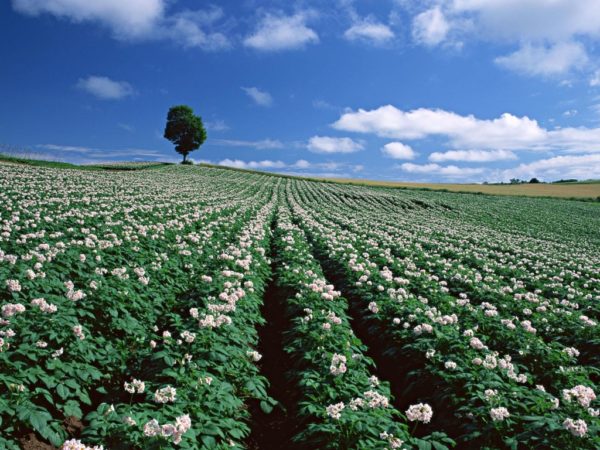
The climate of Atlantic Holland cannot be called favorable for successful gardening, and sown areas occupy a small territory. Despite these difficulties, Dutch potato technology has gained recognition among farmers throughout Europe.
It would be incorrect to consider that these methods are acceptable only for mechanized processing of large areas. Potato cultivation according to Dutch technology is used by many progressive farmers in small plots of land.
Content
Description of growing potatoes using Dutch technology
Technology Principles:
- The Dutch potato cultivars are high-yielding and productive varieties whose seeds are currently exported all over the world. The potato yield in this country is even up to 40 tons per hectare even in lean years.
- Planting material is selected exclusively healthy, from bushes that were not subjected to damage and disease. Seed Ford change occurs at least 5 years later. Dutch seed potatoes are healthy, equally sized potatoes, with a diameter of 3-5 cm.
- Important principles of the technology are planting schedule and timing, earthing up height, top dressing depending on the variety.
- Different harvesting times for seed stock and for consumer purposes.
- Much attention is paid to tillage and crop rotation.
- Timely destruction of pests and weeds.
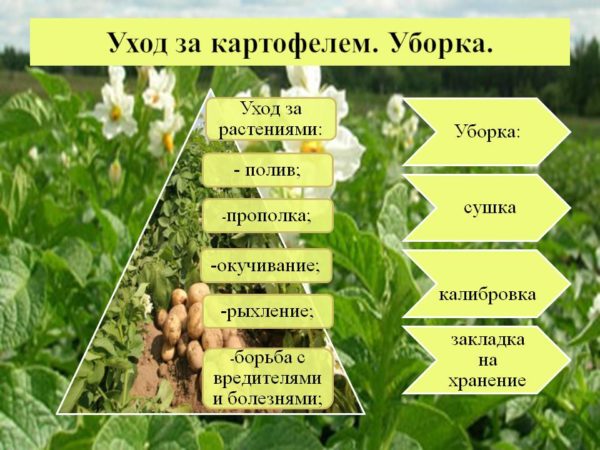
Dutch technology landing dates
Growing potatoes according to Dutch technology involves planting dates, as soon as the soil warms up, but does not have time to dry out. The soil is considered to be finished when collected in a lump, it crumbles into small crumbs thrown from the height of the belt. Planting time begins immediately after processing the site, leaving no opportunity to dry out the plowed soil.
Dutch growing rules
How to prepare the ground
Dutch technology for growing potatoes involves preparing the soil for planting in the fall. During this period, plowing the land with reversible plows, or digging with a shovel in small areas. In spring, the soil is only loosened with a milling cutter; in small areas, harrowing or fluffing with a pitchfork with small teeth is used. Such shallow loosening allows you to save soil pores in which moisture is retained, and planting will suffer less from drought. Milling cutter accelerates the ripening time of the crop by about a week.
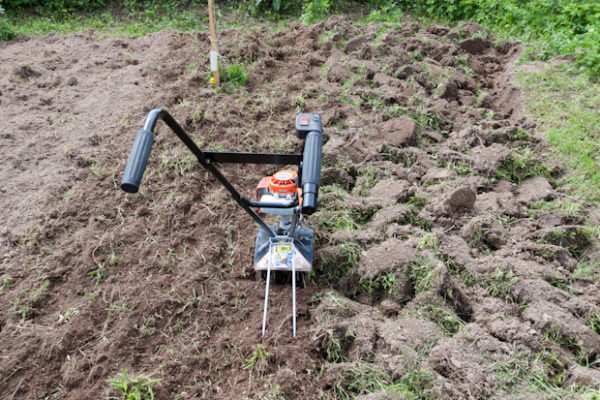
How to plant potatoes
The Dutch method of planting potatoes involves avoiding the stinginess of the bushes. The optimal distance between rows and bushes in rows is 60-80 cm, rows are located from north to south. Potatoes are laid in a shallow trench 4 cm deep and the shaft is poured 8-10 cm high and 30 cm wide on top. Immediately after the appearance of the first seedlings, they carry out sprinkling and bring the shaft height to 25 cm. The distance between the rows seems initially too large, but it is this reserve that is needed for hilling and the formation of a strong root system.
Care Rules
- Weed harvesting. The first processing of potato plantings is carried out two weeks after planting. Its task is to remove all weeds that will interfere with the proper nutrition of potato roots.In large areas, a comb cultivator is used for this. Small beds are cultivated by adding rollers and removing small weeds.
- Treatment with herbicides, means for controlling late blight and pests.
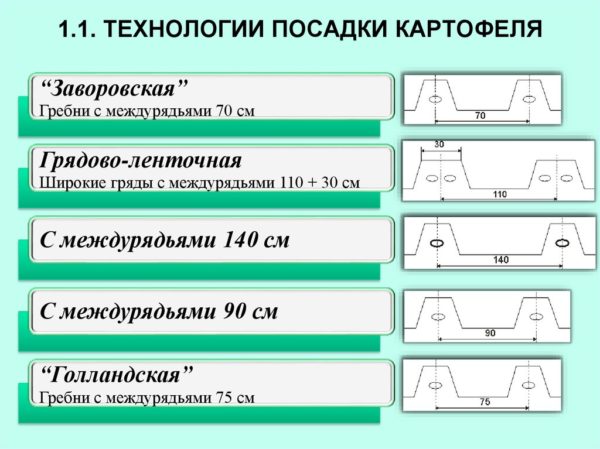
Watering mode
Watering is carried out based on the amount of natural precipitation. With insufficient rainfall, three waterings are mandatory: before flowering, 10 days after the flowers wither, and again after 20 days.
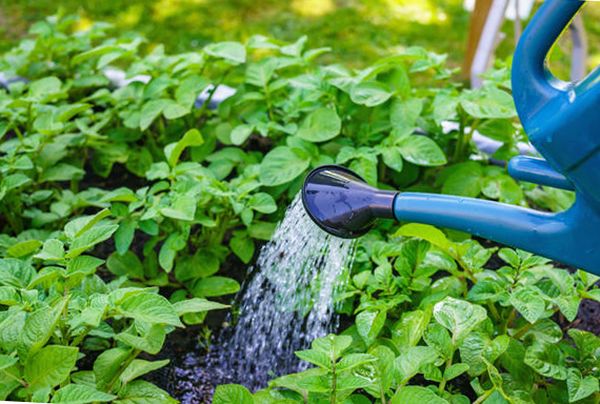
Varieties of Dutch Potatoes
Asterix
Late-ripening variety, the vegetation cycle of which is 100-120 days. The tubers are oval with a dense skin of light purple color. The inner layer is light yellow. Starchiness reaches 14-17%. The number of potatoes in the bush is 10-12. The bushes are tall and erect with small dark green wavy leaves. The flowers are purple.
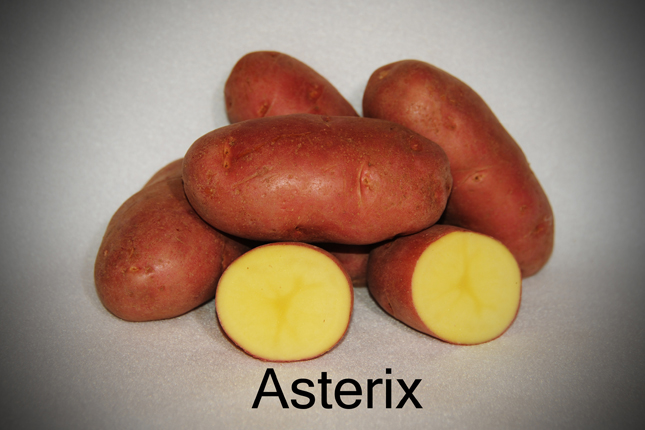
Ukama
The variety is super early. Maturity occurs 60 days after planting. The tubers are elongated, large. The average weight of one is 170 grams. excellent taste. The skin and flesh are yellow. The plus of the variety is that it is very resistant to cancer and nematode, but there is a minus in its inability to droughts and hot temperatures, mandatory watering is required in such periods.
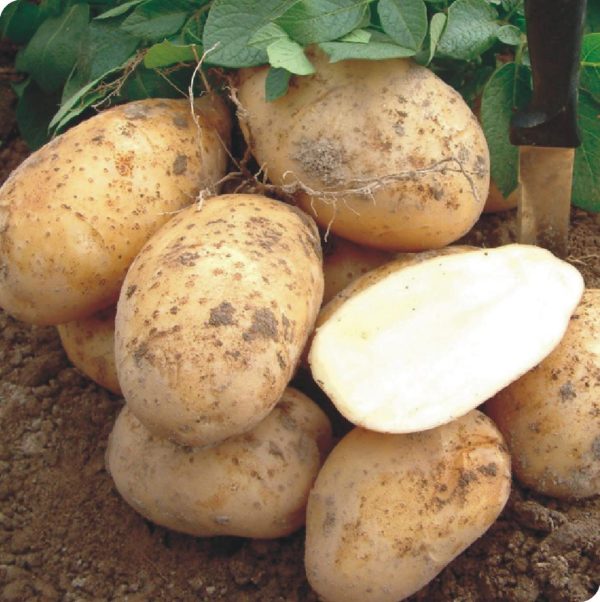
Red scarlett
Early fast-ripening variety, with a growing season of 75 days. Tubers with a dense pink skin and yellow flesh. It is well-digested, has excellent taste. A dense peel will withstand transportation without mechanical damage. The peculiarity of the variety is high endurance to adverse environmental conditions. It does not require special measures in agricultural technology. Resistance to viral diseases.
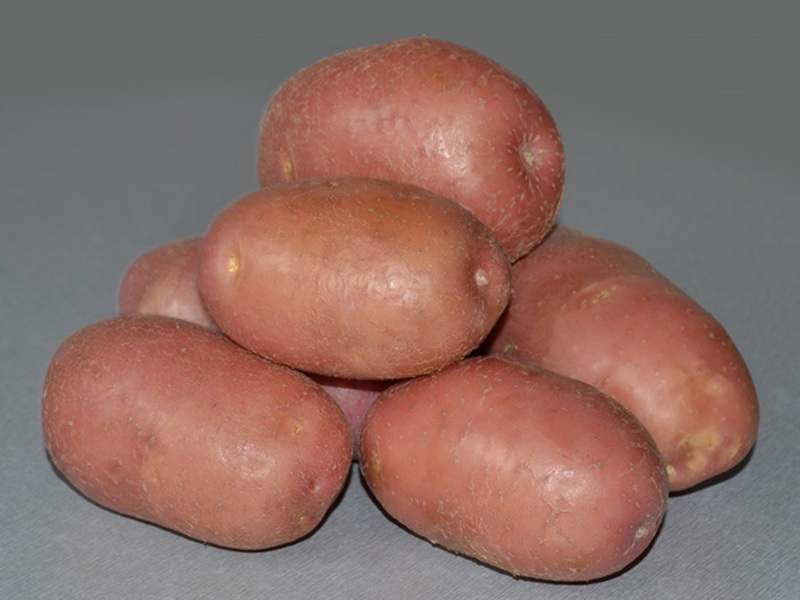
Monalisa
Mid-early variety. The growing season is 65-80 days. The elongated oval shape of tubers. The color is light yellow both inside and out. Hard peel provides resistance to mechanical damage. The variety is resistant to cancer and late blight of tubers, but lends itself to late blight and nematodes. Consumer advice is an excellent grade for use in the preparation of crisps and chips. Recommended for cultivation in small farms.
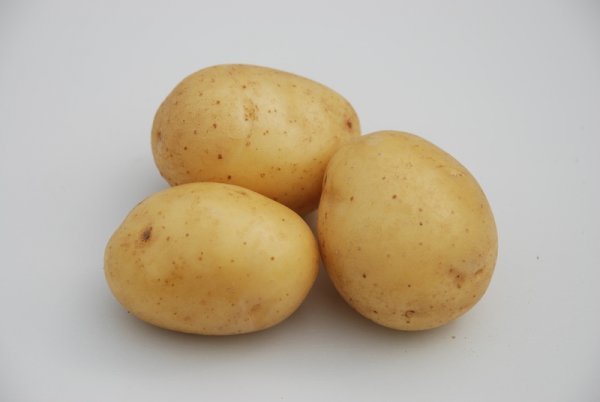
Latona
Potatoes of medium maturity, the growing season of which is 70-80 days. It tolerates both drought and excessive rainfall, temperature fluctuations. Resistant to nematode, scab and dry rot, possibly late blight. Tubers of this variety are even oval. The color is yellow; the flesh has the same color.
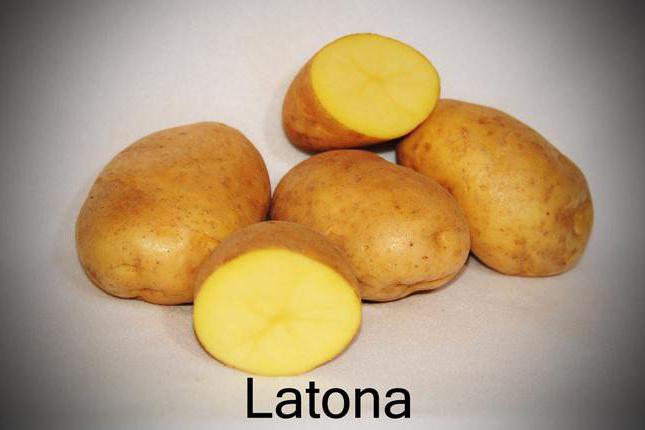
Sante
A variety of medium maturity is 80-90 days. Large tubers in the shape of a regular oval have a light yellow tint. The pulp is white. High yields require a wide distance between the bushes.
Features of the variety: resistance to all types of potato diseases. The low starch content makes it ideal for potato chips and crispy fries.
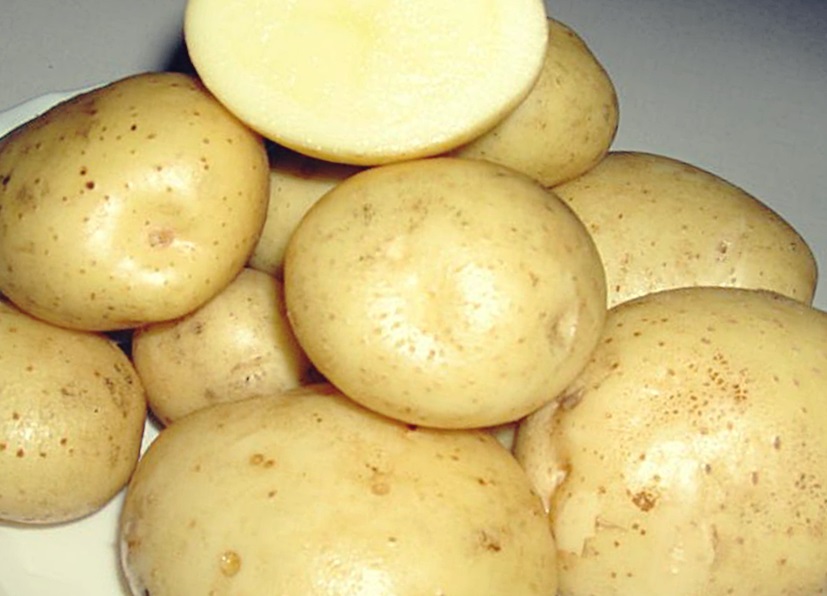
Romance
Ripening dates are medium. The tubers are large, rounded. The skin color is pale pink, the flesh is white.
Features: resistance to major diseases of potatoes, the ability to produce good crops under adverse conditions, is well preserved throughout the winter, even at elevated temperatures.
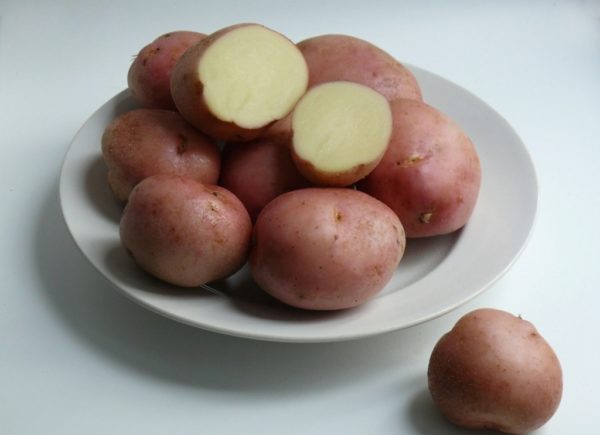
Harvest
This process in the Dutch method of cultivation also has some features.It is important to distinguish between the purpose of the crop. They dig up potatoes for seeds about 3-4 weeks earlier than intended for consumption.
Another difference is the preliminary harvesting of tops noticeably 10 days before the start of harvesting tubers. This process provides hardening of the peel, which ensures good preservation.

Method Reviews
The Dutch way of growing potatoes has interested many farmers and owners of small plots of land. In large areas where mechanized field cultivation is used, this method is gaining more and more fans, especially since the seeds of high-yielding varieties of Dutch and local selection have become available.
On private areas of a small area, gardeners also successfully apply the technology using hand tools for processing. There is one general conclusion in the reviews: varieties and the degree of “aging” of seeds are very important. Fifth - sixth generation is already leading to a decrease in productivity.
It was noted that landing in the ridges allows moisture to remain near the roots, which is important for arid regions, and embankments of soil over shallow furrows do not impede the free access of air.




 Description and description of varieties in Belarus with a photo
Description and description of varieties in Belarus with a photo Do I need to pick flowers from potatoes: why do they do it
Do I need to pick flowers from potatoes: why do they do it When to dig potatoes: timing and availability of new potatoes
When to dig potatoes: timing and availability of new potatoes How to grow a good potato crop: various methods and methods, planting and care
How to grow a good potato crop: various methods and methods, planting and care